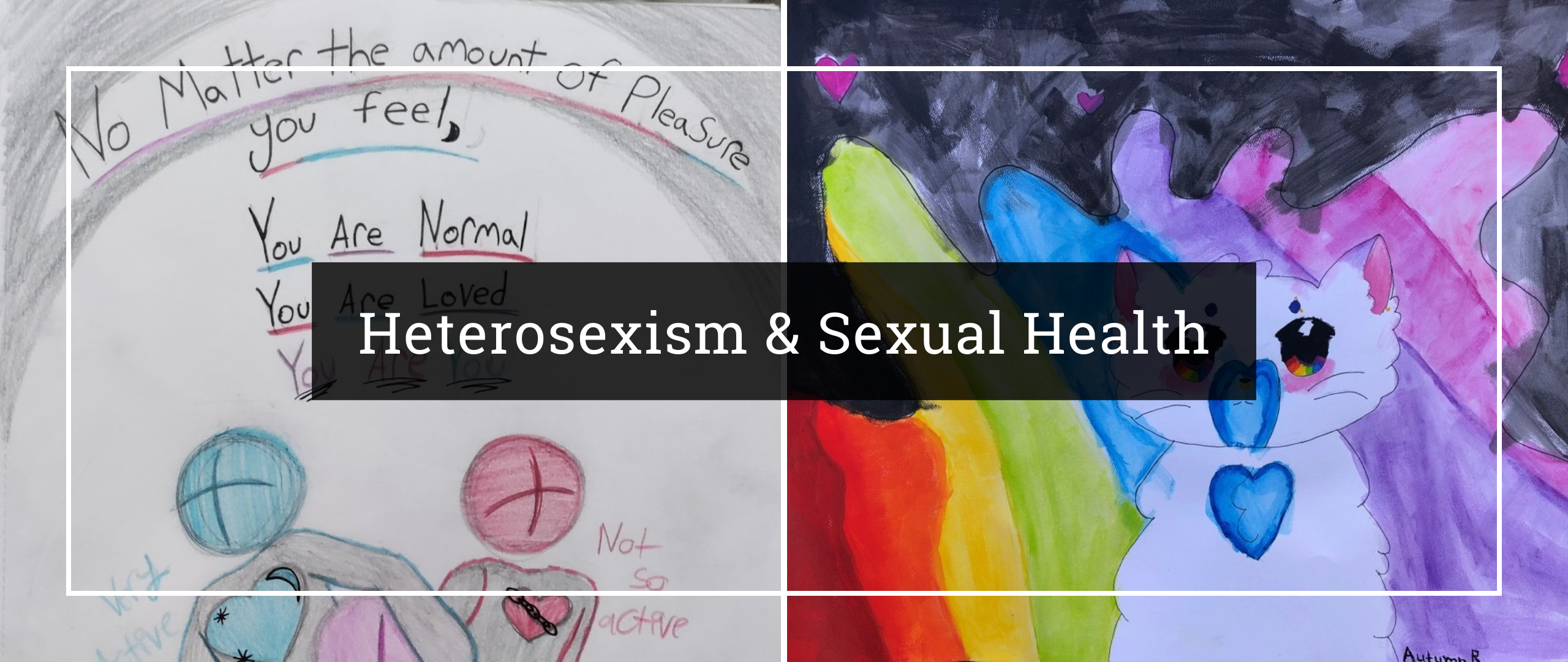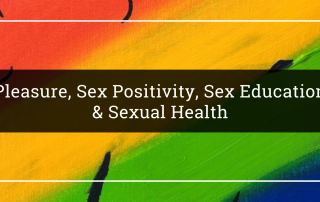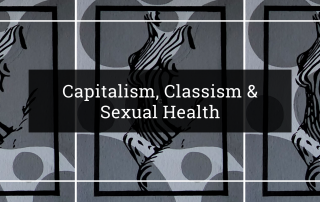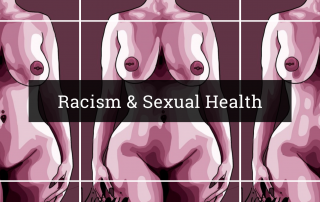
Written and researched by Tomei Kuehl
Accompanying artworks selected in partnership with Talia Cardin, Youth-facilitator to the Youth Sexual Health Program Board
Heterosexism:
“Heterosexism is about assuming, privileging, and giving power to relationships that are perceived as heterosexual.”
– Definition provided by Prism
Since the inception of sex education in the 20th century, sex education has been heteronormative, with a focus on maintaining the institution of marriage through abstinence-until-marriage. Further, much of the federal government funding for sexual health has focused on abstinence until marriage to prevent unplanned teenage pregnancy, which is inherently heteronormative and disregards the needs of students in same-sex relationships, intersex, and others who do not need pregnancy prevention. Specifically, many sex ed curriculums only consider vaginal intercourse as sex, excluding other forms of sexual behaviors, resulting in limited information and education about sexual practices and behaviors. (Burdge, 2019). In the 1980’s, the AIDS epidemic saw the federal government funding strict abstinence-only sex education programs, built on misinformation and shame (Burdge, 2019). Currently there is no federal funding for comprehensive sex education. Instead, the federal government has two programs, the Personal Responsibility Education Program (PREP) and Teen Pregnancy Prevention Program (TPPP) that provide piecemeal education to narrow segments of the youth population with a focus on public health outcomes like preventing HIV/AIDS, other STIs, and teen pregnancy rather than centering youth empowerment, pleasure, and relationship skills (SIECUS, 2021). Additionally, the federal government provides funding for the “Sexual Risk Avoidance Education” program, focused on abstinence-only-until-marriage despite known harms and inaccurate information based on fear, stereotypes, and shame in the program content.
In 2015, the U.S. Supreme Court ruled in Obergefell v. Hodges that states must recognize same-sex marriage and afforded gay couples the right to marry. This was only seven years ago. Justice Clarence Thomas in his concurring opinion overturning Roe v. Wade in 2022 implied that the Court should reconsider its decision in Obergefell v. Hodges as well as Griswold v. Connecticut, a 1965 decision giving married couples the right to contraception. This reflects the connection between abortion rights, contraception, and same-sex marriage and underscores the need to understand the intersection of these issues.
As this history demonstrates, the federal government has played and continues to play an active role in dictating what constitutes sex education.
References
- Burdge, S, Arcadia University (2019) “Queering Sex Ed: The Need for Inclusivity in Sexual Education Curricula,” The Compass: Vol. 1 : Iss. 6 , Article 4.
- SIECUS (Sex Education for Social Change). (2022, March). Federal Funding Overview: Fiscal Year 2022. https://siecus.org/wp-content/uploads/2022/05/FY22-Federal-Funding-Overview.pdf




